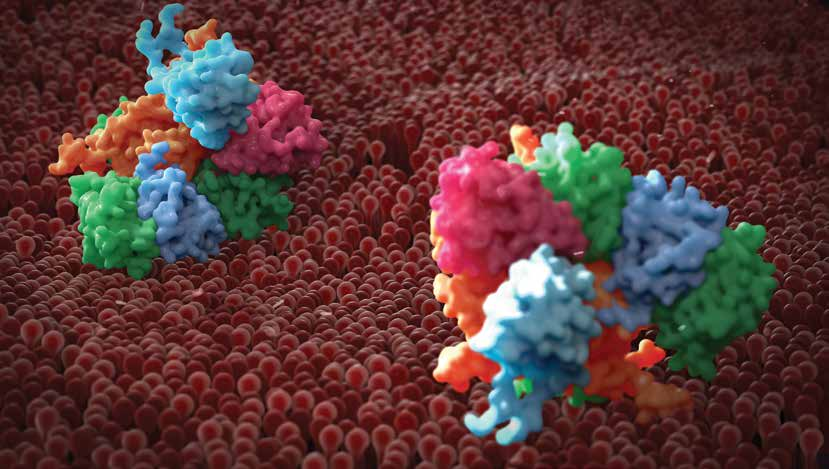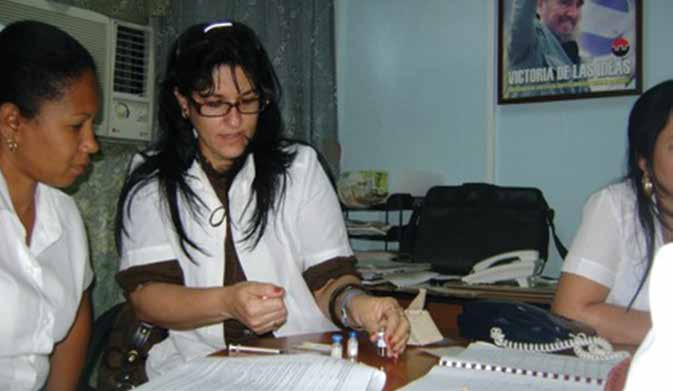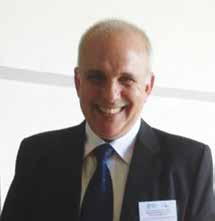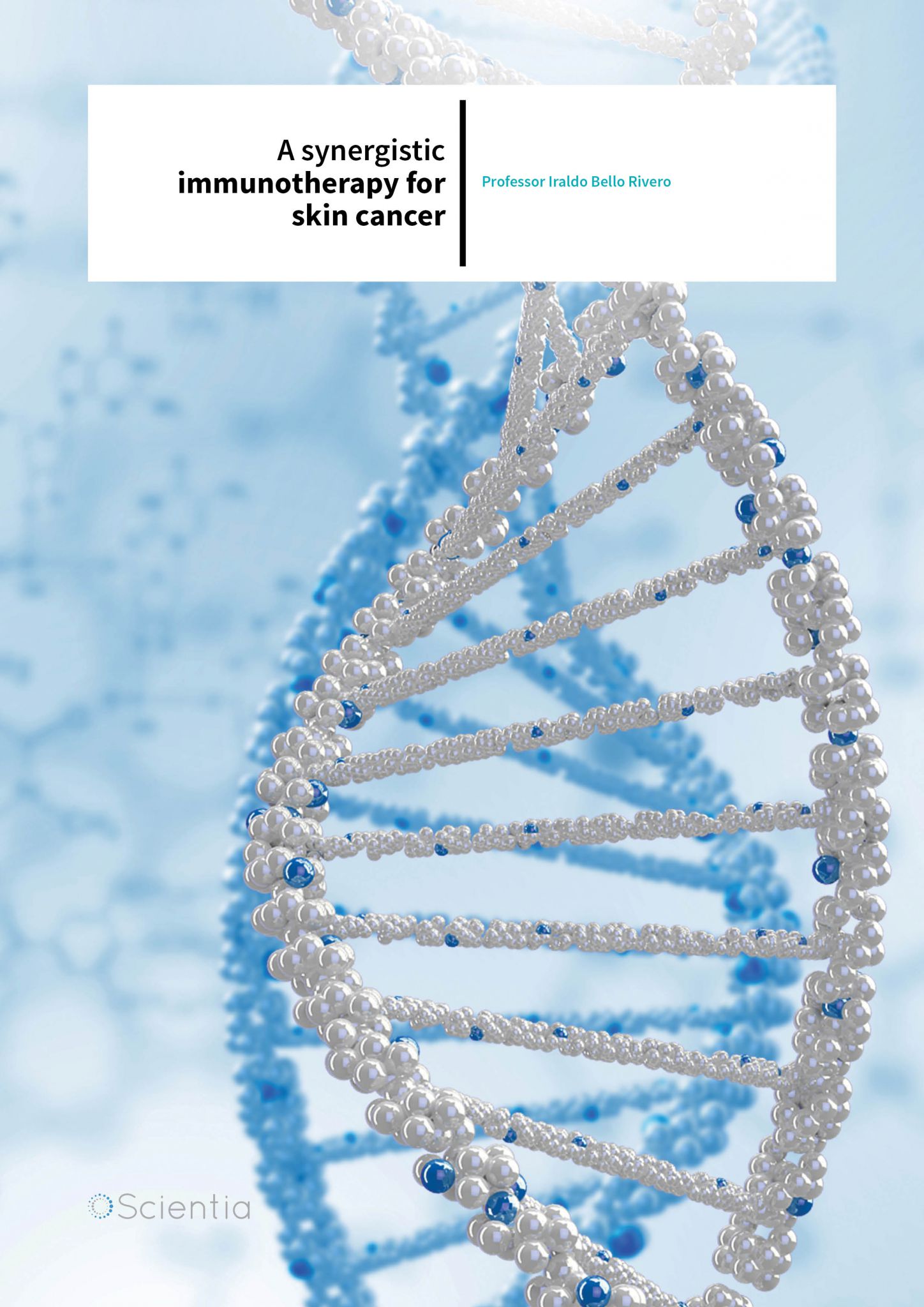Professor Iraldo Bello Rivero – A Synergistic Immunotherapy For Skin Cancer
Professor Iraldo Bello-Rivero, of the Centre for Genetic Engineering and Biotechnology, Havana, Cuba, has conducted several clinical trials to investigate the potential of a synergistic interferon combination therapy for the treatment of skin cancers.

Skin cancer – current therapies and challenges
Cancers of the skin are one of the most common types of cancer globally and their incidence has increased in recent decades. The vast majority of skin cancers arise as a result of exposure to ultra-violet radiation, most commonly in the form of sunlight, or through the use of tanning beds. However, the increased incidence is also attributable to an aging global population, depletion of the ozone layer and improved rates of detection. Light skinned, Caucasian populations in countries that receive a lot of sunlight, such as Australia, are at higher risk, but skin cancers are prevalent across all ethnicities. There are several forms of skin cancer, including basal cell carcinoma (this is the most common form, at 80–90% of all skin malignancies), squamous cell skin carcinoma and melanoma. Professor Bello-Rivero focuses on the treatment of non-melanoma skin cancers. Basal cell carcinoma can present as a raised bump or crusty lesion, whereas squamous cell skin carcinoma can present as thickened skin with redness or scaling. These most commonly present on sun-exposed skin, such as that of the neck, shoulders and face. Basal cell carcinoma and squamous cell skin carcinoma can present in difficult to treat areas, such as around the eye or on the eyelid, where surgical removal would require specialised reconstructive techniques to preserve eyelid function. Cancer in this location is known as periocular carcinoma. Periocular basal cell carcinoma rarely undergoes metastasis (where it spreads and forms tumours elsewhere in the body), but can cause significant morbidity when it arises on the eyelids. Mycosis fungoides is another type of skin cancer, which arises as a result of lymphoma in white blood cells associated with the skin, called CD4 T cells. This causes rashes and lesions of the skin.
The treatment of skin cancer is patient specific and depends on the type of cancer, its location, whether it is a new growth or is a recurrent cancer, whether the cancer is treatment-resistant (to chemotherapy, for instance) and the age of the patient. Many types of skin cancer can be treated successfully with surgery, chemotherapy, radiotherapy or cryotherapy. The current gold standard treatment for many skin cancers is surgical removal. However, this may not always be possible or desirable, because of cosmetic concerns. Surgery can cause permanent scarring and disfigurement and for certain facial cancers other treatments are often preferred. Professor Bello-Rivero is particularly interested in the treatment of ‘difficult’ skin cancers, for which other treatment modalities are not suitable, either as a result of treatment resistance or cosmetic concerns which prohibit surgery.
Interferon therapy in cancer treatment
Another treatment option for skin cancer patients is interferon therapy. Interferons are pleiotropic cytokines. That is, they are substances that are naturally secreted by immune cells and exert effects on multiple cell types in the body, as part of immune responses. A range of interferons have been identified and several have been trialled as potential anti-cancer therapeutics. Interferons are thought to exert anti-cancer action through a variety of mechanisms. These include the direct effects of interferons on cancer cells to reduce their proliferation and survival, their action on immune cells which then go on to attack the cancer in an anti-tumour immune response, and their involvement in processes that are vital to tumour growth and survival such as blood vessel growth, which is termed angiogenesis. Professor Bello-Rivero explained to Scientia why he thinks interferons are promising as anti-cancer therapeutics: ‘Interferons are naturally designed proteins with fabulous properties that impact all the organs and tissues of the body. They are very powerful pleiotropic homeostatic proteins that are yet not well understood.’ Professor Bello-Rivero has extensive experience with interferons. He is credited with discovering the serum soluble interferon gamma receptor, which led to a new paradigm that this receptor could potentially function as an antagonist of interferon gamma.
To date, interferons have been used with varied success in the treatment of a variety of cancers. However, in cases of aggressive basal cell carcinoma the use of single interferon treatments has not yet been shown to be effective. Patients with aggressive basal cell carcinoma or squamous cell skin carcinoma tend to suffer high levels of tumour recurrence and secondary primary tumours and consequently there is still an unmet clinical need in this patient population. While the anti-tumour potential of interferons is well known, there has not been a breakthrough in interferon cancer treatments in the last decade.
‘Interferons are naturally designed proteins with fabulous properties that impact all the organs and tissues of the body’

HEBERFERON – a synergistic interferon formulation
Efforts to change or enhance the effects of interferon treatments have previously involved combining more than one type of interferon. However, to date, these combinations have not always been rationally conceived to maximise efficacy, by capitalising on known synergistic effects. Professor Bello-Rivero has identified a combination of interferons with proven in vitro synergistic activity, which he decided to trial in the clinic. He discussed his experience with interferons and motivation for this combination therapy: ‘I have been involved in the study of interferons from more than 25 years. I decided to improve the clinical impact of the use of interferons in the treatment of cancer exploiting the synergism between these two very potent molecules, in a rational way not previously tried.’ This strategy involves combining two different interferons, interferon alpha and interferon gamma, in one treatment. Professor Bello Rivero has conducted extensive research on the interaction of interferon alpha and interferon gamma receptors and discovered that they interact with a likely common protein in the interferon alpha and/or interferon gamma receptor complex. This was a surprising discovery at the time, and it was contrary to mainstream scientific thought, which made it challenging to get these results published. However, in 2001 the paper detailing this interaction was finally published in Biochemical and Biophysical Research Communications.
A combination of interferon alpha and interferon gamma has previously been shown to produce synergistic effects in reducing the proliferation of several cancer cell lines. Interferon alpha and interferon gamma share similar biological activities and it is thought that this may underlie the reinforcing effect that they have on each other. In vitro results suggest that these interferons may affect similar genes, albeit through different mechanisms, such as the activation of different protein receptors, thereby preserving the specificity of each interferon but providing a means for synergy. One research group found that when mouse cells were treated with interferon gamma that interferon alpha receptors were crossrecruited and became activated and other research groups have found that interferon alpha and interferon gamma receptors move closer together and become associated in the presence of interferon alpha and interferon gamma. Therefore, considering the results of Professor Bello-Rivero and other research groups, there is tangible evidence of interferon alpha/interferon gamma crosstalk, mutual activation and synergistic anticancer efficacy. Consequently, this interferon combination represents a promising anticancer treatment modality.
Results to date with HEBERFERON
Professor Bello-Rivero and his research team have formulated a combination interferon alpha/interferon gamma therapeutic for the clinical treatment of skin cancers, called HEBERFERON. The team has applied the therapeutic in a number of clinical trials to assess its potential. Here, we discuss some of their key results, to date.
In 2009, the team published the results of an early trial for the HEBERFERON treatment of patients with basal cell carcinoma and squamous cell skin carcinoma, which was advanced, recurrent and was resistant to previous treatments. This specific trial had the primary goal of assessing treatment safety but the rationale was to find an effective non-surgical therapy for this patient subtype, who had exhausted other therapeutic options. Patients received injections of HEBERFERON into or beside cancerous lesions, three times a week, for three weeks. Although the patient cohort was small (16 patients), 46.7% of the HEBERFERON-treated patients experienced a complete response to the therapy and 40% experienced a partial response. Given that this is a treatment-resistant patient sample, these results are very encouraging. Side effects were largely well tolerated and included chills and fever, which is typical for interferon therapy.

In a slightly larger trial (InCarbacel-II) the team compared HEBERFERON treatment of basal cell carcinoma with individual interferon treatments, to assess if synergistic efficacy was possible. They found that more patients treated with HEBERFERON responded to therapy, compared with those treated with individual interferons, including a complete response rate of 42% in the HEBERFERON treatment group. They also found that combination therapy produced a more rapid and prolonged effect, compared with treatment with individual interferons. Patients who responded to the therapy were left with excellent cosmetic results, compared with surgery and associated reconstructive procedures.
In a third small trial, the team focused on assessing the potential of the formulation in treating periocular cancer (basal cell carcinoma or squamous cell skin carcinoma), which is difficult to treat, as surgery is often precluded or difficult without causing damage to the eyelids. After 12 weeks of treatment 47.6% of patients experienced a complete response and 23.8% experienced a partial response. Another clinical trial to assess the potential of HEBERFERON treatment in patients with mycosis fungoides has also been carried out by the team. All patients received a single high dose of HEBERFERON, intramuscularly, to assess the pharmacodynamic and pharmacokinetic parameters of the drug. Interferon inducible markers were measured in the blood over the next 96 hours. The drug was largely well-tolerated and produced an increase in interferon inducible markers that was greater than conventional individual interferons, showing that it has the potential to be efficacious in this patient cohort. Further efficacy studies are required to determine the potential of the drug to alleviate or resolve mycosis fungoides in affected patients.
‘We are now receiving interest and international recognition for our work, and several groups are interested in using HEBERFERON
to perform molecular biology studies, or to combine it with other products to see the impact on the treatment of patients with cancer’
Future work
The HEBERFERON formulation has been approved in Cuba for the treatment of basal cell carcinoma, based on the extremely encouraging results achieved to date. However, the team would like to undertake larger trials to further assess its potential. Professor Bello-Rivero tells Scientia about his plans for future research and collaboration. Financial support and new collaborators are key for undertaking further trials: ‘We are now receiving interest and international recognition for our work, and several groups are interested in using HEBERFERON to perform molecular biology studies, or to combine it with other products to see the impact on the treatment of patients with cancer. We would like to perform additional clinical studies to further determine the efficacy and safety of this formulation in the treatment of skin cancer. To achieve this we would like to find partners, and collaborate with other groups or companies, because this is a costly route for the treatment of cancer patients.’
Meet the researcher

Professor Iraldo Bello Rivero
Centre for Genetic Engineering and Biotechnology (CIGB),
Havana, Cuba
Professor Iraldo Bello-Rivero obtained his Ph.D. from Havana University (2005). He carried out fellowships with Dr Michel Aguet (1988) at the Institute of Immunology and Virology, Zurich, Switzerland, with Dr Erik Lundgren (1994) at the Department of Molecular Biology, Umea University, Sweden and with Dr Marco Soria (1995) at Department of Biological and Technological Research, San-Raffaele Scientific Institute, Italy. He was also the head of the Clinical Trial Laboratory at CIGB between 1994 and 2005. He has published more than 25 papers in reputed journals and received Cuban Academy of Sciences Awards in both 1990 and 2006 and a Public Health National Award (Cuba) in 2010. He is author of three patents and is the product manager at CIGB.
CONTACT
E: iraldo.bello@cigb.edu.cu
T: (+53) 72087379
W: www.cigb.edu.cu
KEY COLLABORATORS
Yanelda Garcia-Vega. Department of Clinical Research, Center for Genetic Engineering and Biotechnology, Havana, Cuba. Lorenzo Anasagasti-Angulo. Department of Medical Oncology, National Institute of Oncology and Radiobiology, Havana, Cuba Sonia Collazo-Caballero. Department of Dermatology, Hermanos Ameijeiras Hospital, Havana, Cuba.
FUNDING
Government funding
REFERENCES
Garcia-Vega, L Anasagasti-Angulo, C Valenzuela-Silva, M Navarro- Mestre, S Maribeth-Ordoñez, D Acosta-Medina, M Rodríguez-Garcia, S Collazo-Caballero, E Tijerino-Arrieta, Y Duncan-Roberts, E Arteaga- Hernández, Y Jiménez-Barban, D Vila-Pinillo, E Torres-Valerio, M Vazquez-Castillo, P López-Saura and I Bello-Rivero, Retrospective Study of Periocular Non Melanoma Skin Cancer Treated with the Combination of IFN alpha2b and Gamma (HeberPAG), Clinical & Experimental Ophthalmology, 2015, 6, 5.
I Bello-Rivero, Y Garcia-Vega, C Valenzuela-Silva, C Bello-Alvarez, D Vázquez-Blomquist and P Lopez-Saura, Development of a new formulation of interferons (HEBERPAG) for BCC treatment, Journal of Cancer Research & Therapy, 2013, 1, 235.
Y García-Vega, I García-García, SE Collazo-Caballero, EE Santely-Pravia, A Cruz-Ramírez, ÁD Tuero-Iglesias, C Alfonso-Alvarado, M Cabrera- Placeres, N Castro-Basart, Y Duncan-Roberts, TI Carballo-Treto, J Soto-Matos, Y Izquierdo-Toledo, D Vázquez-Blomquist, E García- Iglesias and I Bello-Rivero, Pharmacokinetic and pharmacodynamics characterization of a new formulation containing synergistic proportions of interferons alpha-2b and gamma (HeberPAGW) in patients with mycosis fungoides: an open-label trial, BMC Pharmacology and Toxicology 2012, 13, 20.
L Anasagasti-Angulo, Y Garcia-Vega, S Barcelona-Perez, P Lopez-Saura and I Bello-Rivero, Treatment of advanced, recurrent, resistant to previous treatments basal and squamous cell skin carcinomas with a synergistic formulation of interferons, BMC Cancer, 2009, 9, 262.

